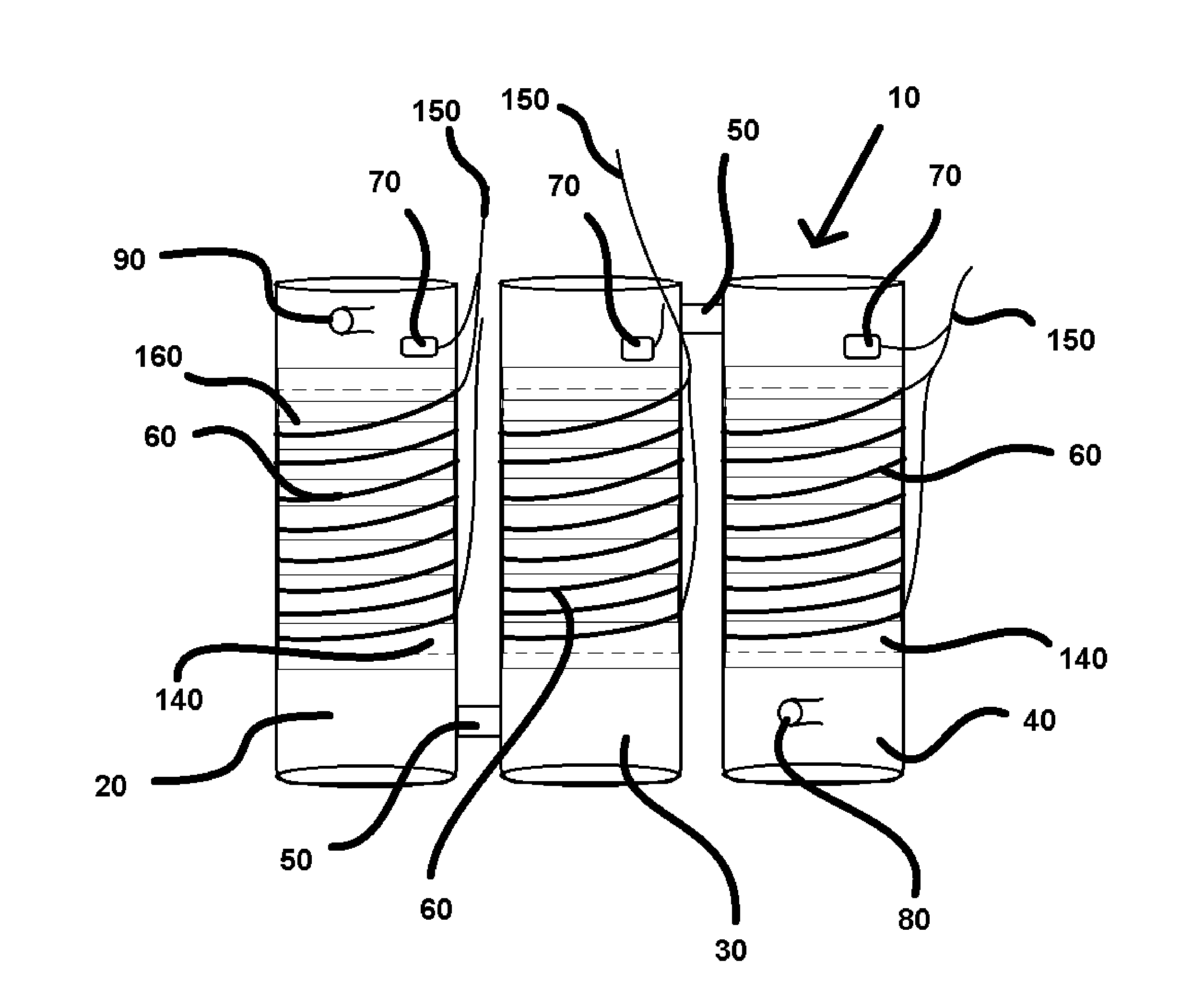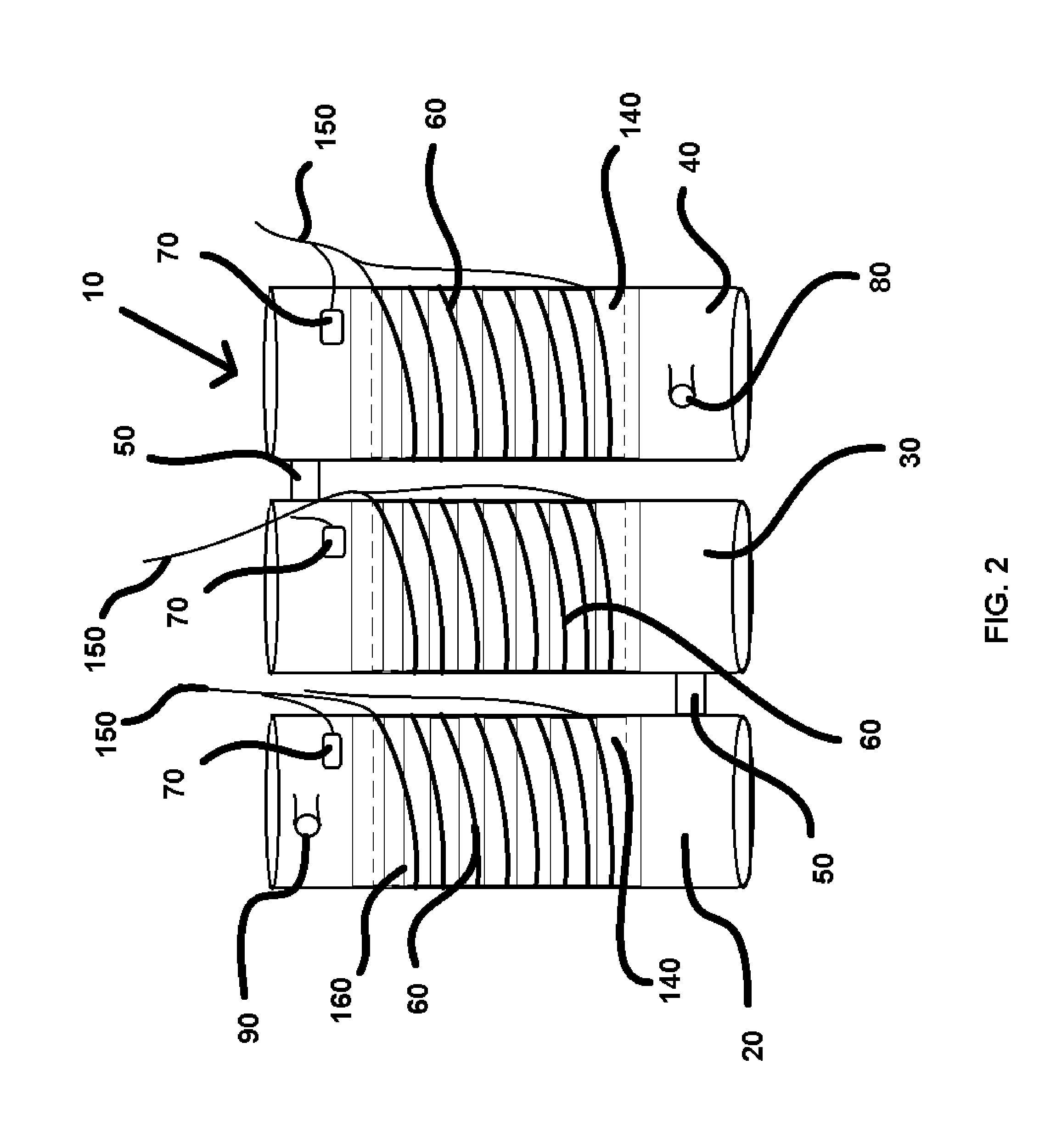Series of Tanks That Forestall Mixing Fluids of Non-homogeneous Temperatures
a technology of non-homogeneous temperature fluids and tanks, applied in the field of tanks, can solve the problems of wasting energy used to heat water, affecting the efficiency of heat exchange, and affecting the efficiency of heat exchange, and achieve the effect of virtually eliminating the risk of electric shock
- Summary
- Abstract
- Description
- Claims
- Application Information
AI Technical Summary
Benefits of technology
Problems solved by technology
Method used
Image
Examples
Embodiment Construction
[0021]The present invention is a heat conservation and exchange system configured for the efficient regulation of the temperature of a liquid. The preferred embodiment of the present invention is equipped with a series of tanks (10) which preferably include a first tank (20), a second tank (30), and a third tank (40). It is envisioned that additional tanks may be employed in alternate embodiments of the present invention, for applications larger in scale. The series of tanks (10) are preferably connected via pipe fittings (50). Each of the tanks of the series of tanks (10) is independently equipped with a heating coil (60), a temperature sensor (70), an input (80) and an output (90), as shown in FIG. 2. It should be understood that the input (80) is connected to the water source. The heating coils (60) are in communication with a power source (100), which is preferably a 12 v AC supply. 12 v DC relays (110) are disposed in communication with the heating coils (60) as shown in FIG. 1...
PUM
 Login to View More
Login to View More Abstract
Description
Claims
Application Information
 Login to View More
Login to View More - R&D
- Intellectual Property
- Life Sciences
- Materials
- Tech Scout
- Unparalleled Data Quality
- Higher Quality Content
- 60% Fewer Hallucinations
Browse by: Latest US Patents, China's latest patents, Technical Efficacy Thesaurus, Application Domain, Technology Topic, Popular Technical Reports.
© 2025 PatSnap. All rights reserved.Legal|Privacy policy|Modern Slavery Act Transparency Statement|Sitemap|About US| Contact US: help@patsnap.com



